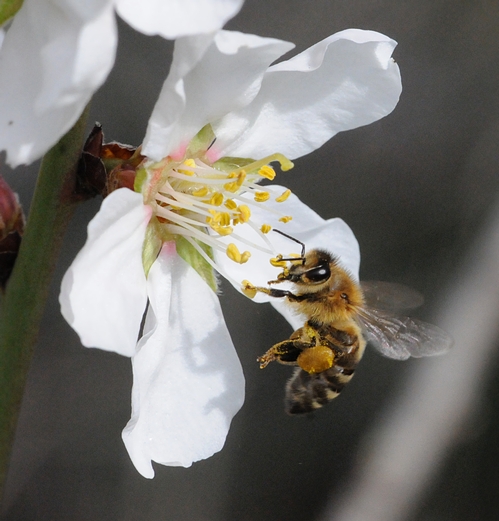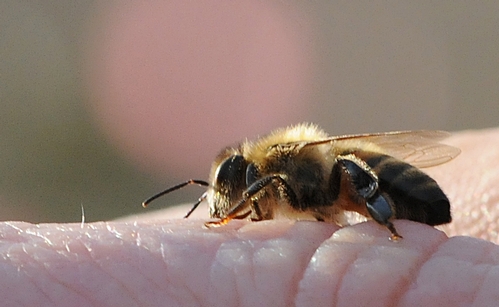Posts Tagged: almonds
Farm advisor hails self-pollinating almond
A self-pollinating almond variety under study at the USDA's research facility in Parlier would relieve farmers of costly annual bee rental to pollinate their trees, according to an article in Saturday's Fresno Bee.
"That is like the Holy Grail," UC Cooperative Extension farm advisor Roger Duncan told Bee reporter Robert Rodriguez.
"You can feel that hairiness with your tongue," the release quoted USDA geneticist Craig Ledbetter. “That can turn off U.S. almond consumers, who are used to the smooth texture of Nonpareils."
Ledbetter used Tuono as the male parent in conventional hybridizations with California almond cultivars and selections. In 2008, he brought eight promising self-pollinating selections to the California Almond Board for evaluation of taste and appearance. Testers rated the nuts comparable to Nonpareils, the USDA release said.
ABC Action News in Fresno also took on the story. It said Ledbetter began his work with self-pollinating almond trees 17 years ago out of fears Africanized bees could kill off local hives.
"It was out of those concerns we really started the program," Ledbetter told reporter Dale Yurong. "It's ironic that a different bee problem (Colony Collapse Disorder) came up."

Bee hives in a California almond orchard.
Protecting Our Pollinators
It's not too early to start thinking about NPW.NPW? National Pollinator Week. The fourth annual National Pollinator Week, set June 21-27, is a time...

Almond Tree at the Laidlaw Facility

Honing In

Buds 'n Blossoms

Close-Up
No Day Off
It's Presidents' Day today, a holiday for most of us but not for the honey bees.The bees are buzzing in and around the almond blossoms, collecting...

Honey Bee

Pollen Dust

Beach Ball

Wild Blue Yonder
Plant It and They Will Come
Plant it and they will come. The Häagen-Dazs Honey Bee Haven, planted last fall, is already attracting a few honey bees. The half-acre bee friendly...

Making Headway

Almond blossoms

Haven Visitor
When will Mother Nature get it right?
Farmers reeling from three years of drought and an unseasonably warm January are now worried about rainfall at the wrong time of year, according to a story in today's Redding Record Searchlight.
Almond trees that bloomed early because of warm January weather suffered some frost damage. Now, rain during spring bloom is inhibiting pollination. (Who can blame bees for curling up with a good book on rainy days?) Wet weather also raises concerns about fungal diseases. But despite these abnormal weather patterns, UC Cooperative Extension farm advisor Bill Krueger assured writer Debra Moore that almond farmers will still have nuts to harvest next fall.
"If there is good weather between storms, it will give the bees a chance to pollinate," Krueger was quoted. "The diseases won't be as bad as they would have been had these been warm storms."
The article also covered problems experienced by cattle ranchers when precipitation doesn't arrive on schedule.
UCCE livestock program representative Josh Davy told the reporter that February rain storms are filling up stock water ponds, but won't help farmers concerned about this season's rangeland vegetation, on which they rely for animal rations.
"The annual grasses are germinated with fall rains," Davy was quoted. "And this rain has come too late."

